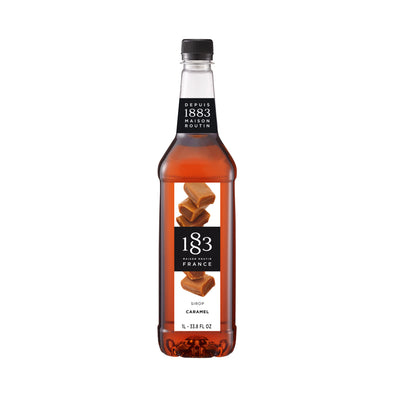A Spotlight On Green Teas
The health benefits of tea have been known about and understood for thousands of years, indeed ever since it was first discovered and drunk in China in 2737 BC… Most of the past evidence may have been circumstantial but thankfully now scientists have been wading in to confirm the suspicions of the ancients that tea is actually really good for you!
The main health-promoting substances in tea are polyphenols, in particular catechins and epicatechins. Studies Show that these molecules have anti-inflammatory and antioxidant properties.
Tea helps moderate blood sugar levels, enhance the immune system, promote gut health and healthy bacteria in the gut, assists in the breakdown of fats, helps maintain the bodies fluid balance and helps reduce stress.
Next to water, drinking green tea from 100% quality tea leaves is one of the most nutritious beverages you can consume.
Green tea is harvested when the tea leaves are young and then preserved quickly by either steaming, oven baking or dry pan firing to prevent oxidisation and then quickly preserved. A process which is totally different to the harvesting of almost any other tea format.
Longjing or Lung Ching ‘Dragonwell’
This is one of the most famous Chinese green teas and was granted the status of Imperial Tea of ‘Gong Cha’ during the reign of the Qing dynasty. The tea’s name Longjing, translates as dragon well and is purported to be named after an ancient well that contained two types of water after rainfall, the lighter of which floated on the surface of the other and exhibited serpent likes shapes on the surface, which resemble the movement of a Chinese dragon.
Authentic Longjing should be grown in Zhejiang province, increasingly this been extended to include plantations in the western regions of Hangzhou province. Varieties are grown in Yunnan, Guizhou, Sichuan, and Guangdong and are largely frowned upon as being inauthentic.
As with other green teas re roasted early after harvest to stop natural oxidisation, it’s then rolled, shaped and dried. Delivering a complex and multi-layered tea with a combination of sweet and smooth flavours.

Peppermint Green Tea
Peppermint Green Tea is a high-quality green gunpowder tea, blended with peppermint oil, giving the tea an intense, vibrant and refreshing menthol flavour.
It’s a hybrid species of mint, crossed water mint and spearmint, both of which are widely found in Europe and the Middle East. Peppermint is now widely cultivated in many regions of the world and is widely used as a flavouring for many things.
We all know Peppermint has a refreshing taste but what you might not know is that it has also been found to help the digestive system, with numerous studies showing that peppermint and peppermint oil infusions have helped relieve indigestion, nausea and stomach pains.
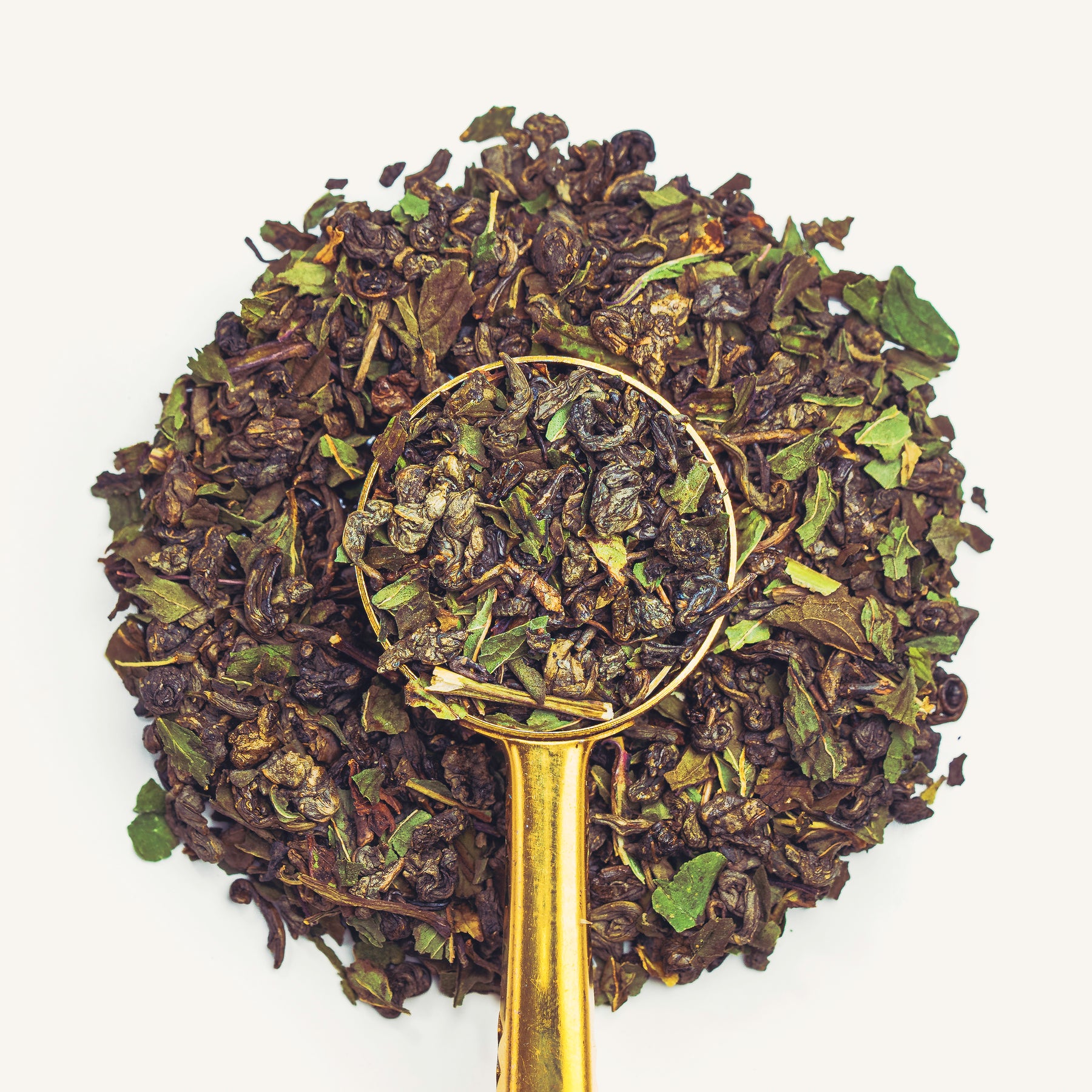
Green Tea
Often dubbed the healthiest beverage on the planet, it’s loaded with antioxidants, vitamins and minerals, all of which have a hugely beneficial effect on the body, including reducing the impact of certain cancers, helping to improve brain functionality, improves your metabolism, reduces cholesterol and lowers the risk of heart disease.
Sencha Green Tea
This is a is a steamed green tea made from small-leaf tea which is commonly produced in Japan, China and South Korea. The flavour profile can vary hugely depending on the type of sencha being grown, as well as the drying and processing techniques used, producing teas with flavours including fresh grass and seaweed.
After harvesting, sencha is initially processed by quickly steaming the fresh tea leaves, this is designed to prevent oxidisation and also to lock in the colour and flavour. After which the leaves are rolled, shaped and then dried.

Dragon Phoenix Pearl Tea
This is possibly one of the most memorable green jasmine teas available and it is extremely rare. Its name originates from the way it’s processed, with the resulting tea leaves resembling mythical dragon and phoenix eggs.
This tea is underpinned by a rolled green tea, handpicked early in the season and includes two tea leaves and a bud in each pearl. The freshly picked leaves are then scented with fresh jasmine blossoms and left to naturally absorb the jasmine before being hand rolled into tight pearls and then dried. When infused, the pearls gently unfurl to create a beautifully scented tea with a sweet jasmine aroma, with a rich and rounded velvety texture to finish.

Jasmine Green Tea
It’s one the most popular flavoured teas formats in the world, high quality jasmine green tea is made with green tea leaves that have been naturally scented with jasmine flowers, providing the resulting tea a sweet, floral flavour.
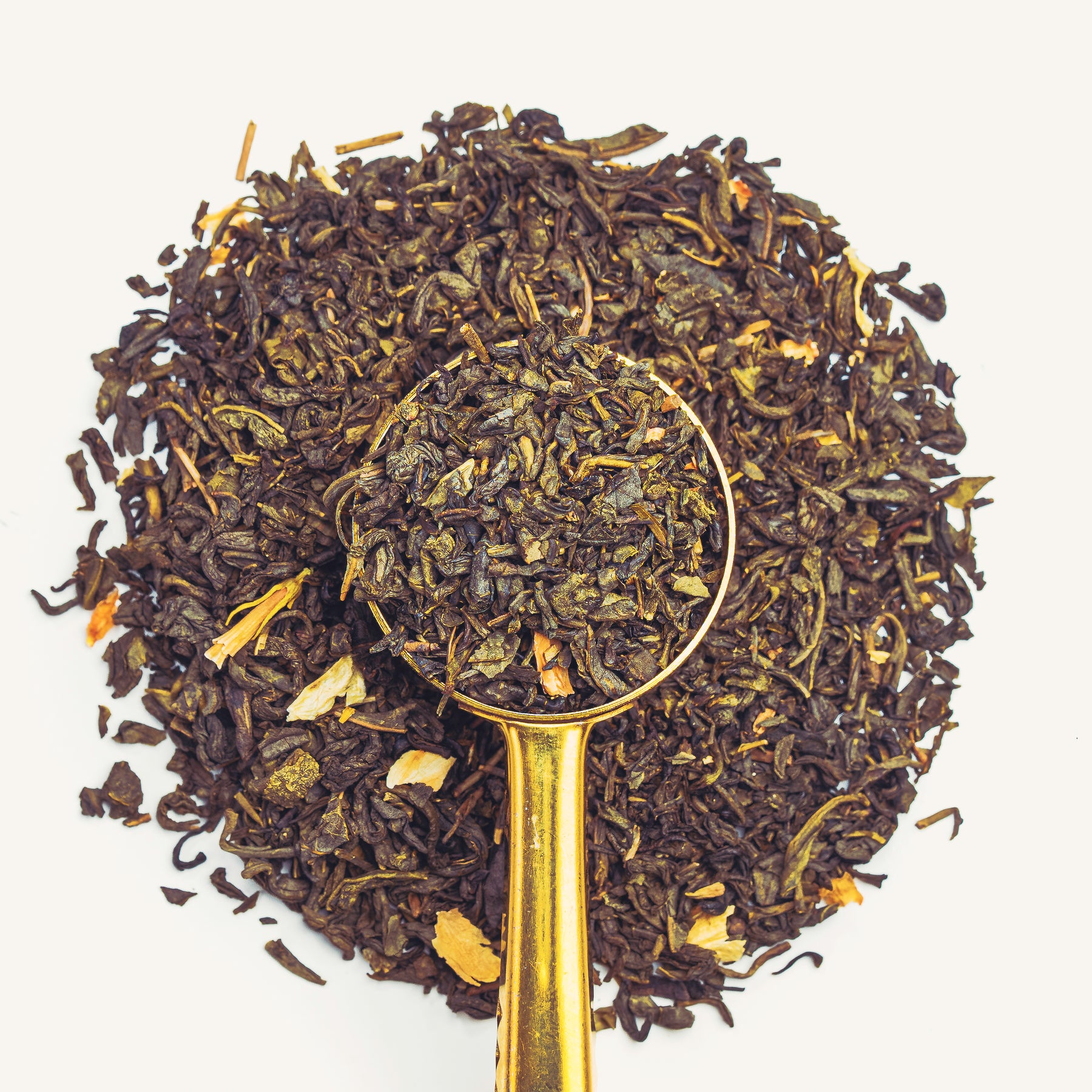
Cherry Green Tea
This tea is makes use of Chinese green gunpowder tea and is scented with cherry oils, which gives the tea refreshing a rich umami flavour with delicate sweet notes to finish.
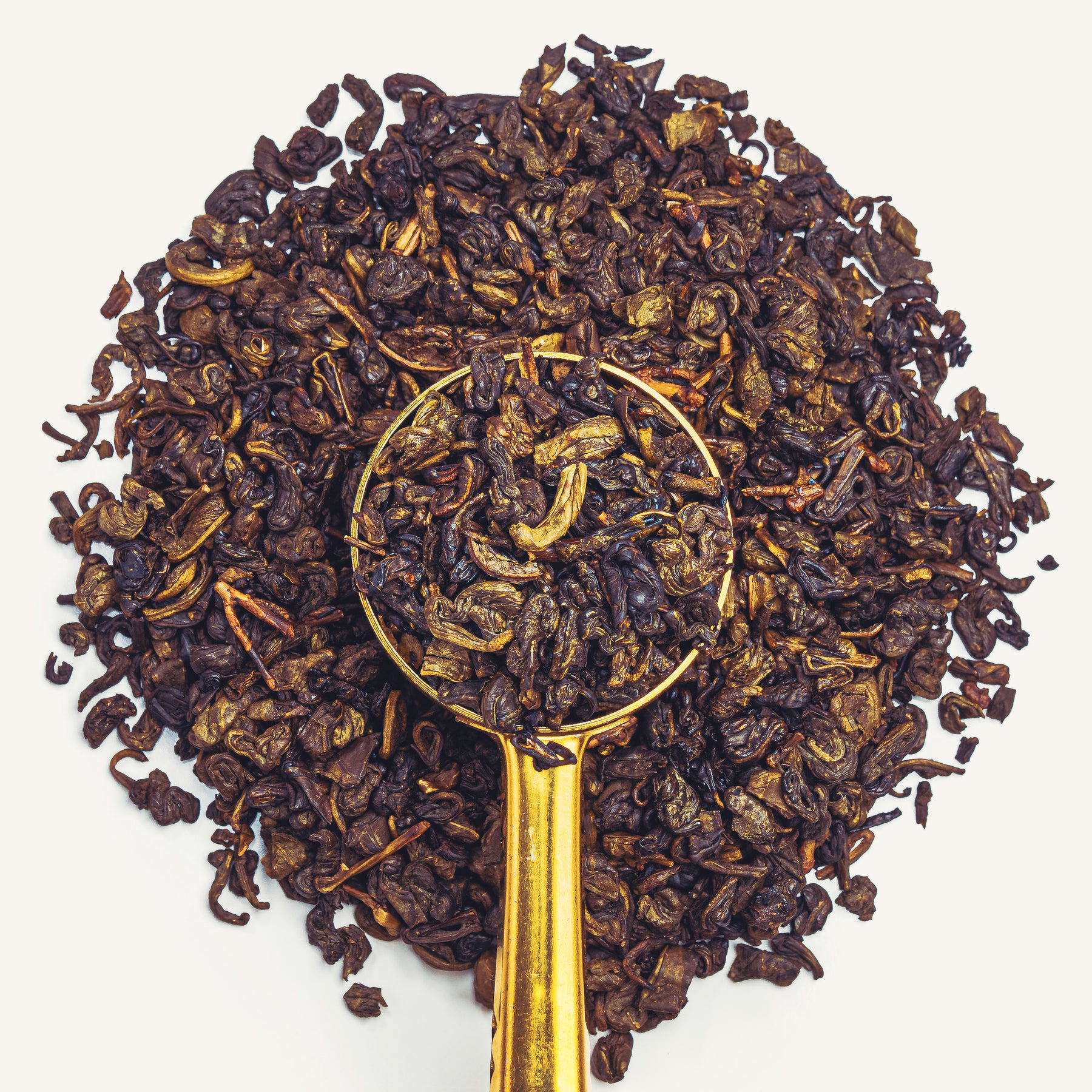
Tropical Green Tea
A refreshing blend of green tea infused with dried pineapple, safflowers which are rich in antioxidants as well as cornflower petals, which are rich in mineral salts, anthocyanins and flavonoids which help detoxify the body. The perfect detox tea!
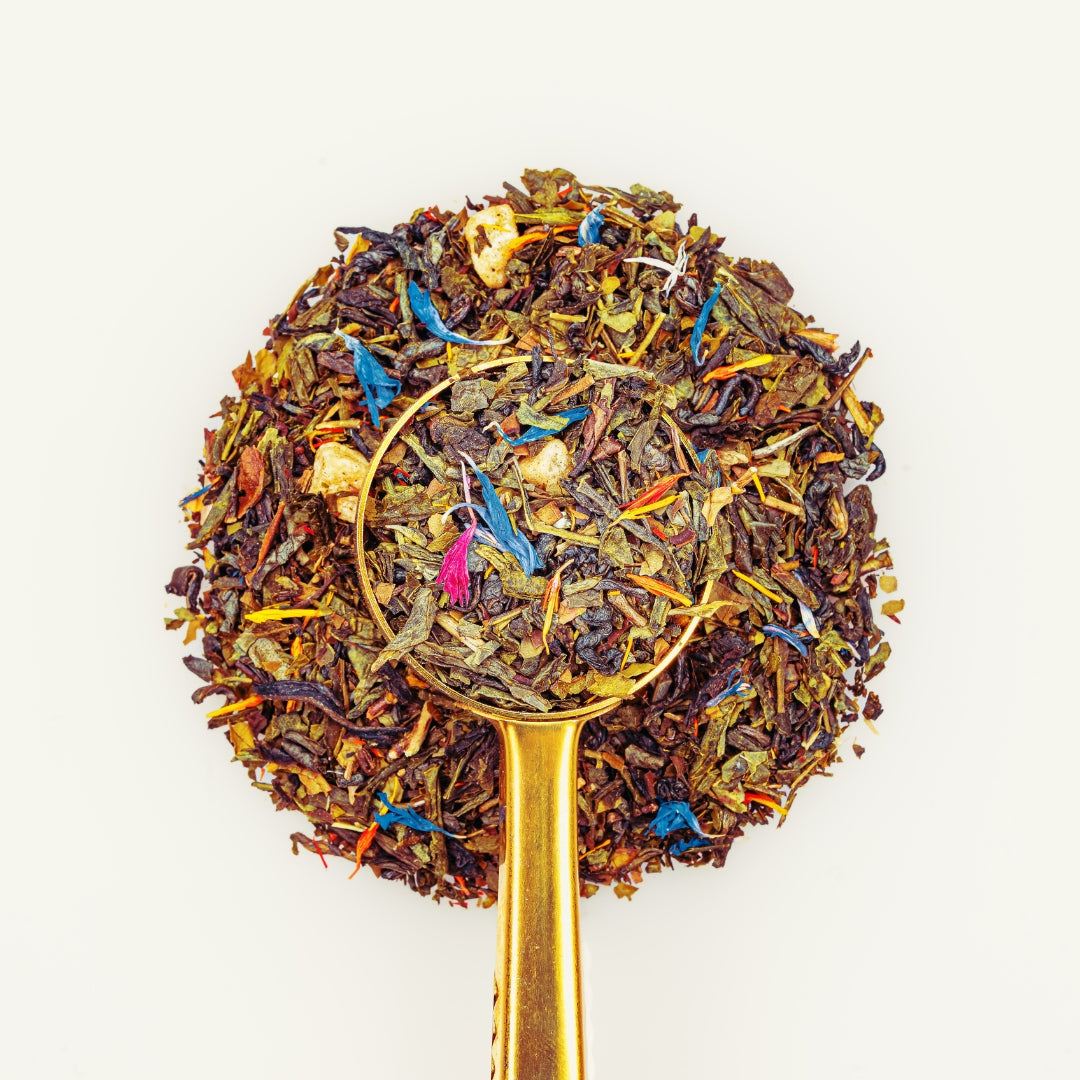
Green Gunpowder Tea
This tea is again prepared differently to most. As with standard green tea, gunpowder green tea can be traced back to China’s Tang dynasty and is made by steaming the leaves as with other formats, they are then rolled into balls (these balls look like pellets of gunpowder, hence its name) and dried. It’s also often know as either pearl tea, which is also linked to the ball shape of each tea pellet, which when added to warm water unfurl delivering underlying hints of smoke and chocolate in its flavour profile.




